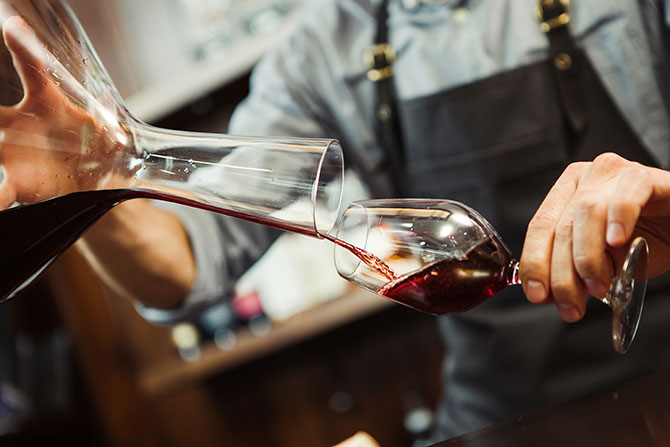Having a glass of your favorite red or white wine after a busy day sounds like a brilliant idea. But what if you uncork a bottle and feel a strong smell? Many wine lovers and connoisseurs know that aeration tends to improve the experience of drinking some wine. However, it is essential to be aware of what types of wines require aeration and how long should you let wine breathe. Buy fine alcoholic drinks in a wine shop where you will find a suitable option among the wide assortment. Today, we`ll discuss how long wine should breathe and not only.
Should you let your wine breathe?
There is no need to aerate every wine you are planning to taste. Some wines, like Sauvignon Blanc, can lose their aromatic properties once they are exposed to excessive aeration. On the other hand, aeration can bring more benefit than damage to certain sorts of wine. Once you let younger wines breathe, tannins won`t be so bold, while old wine aeration tends to prevent you from sediment in your glass.
By the way, the term aeration refers to the method of oxygen supply to the wine, which reveals its scents and flavors. There are some ways you can do wine aeration. The first is the simplest – you need to swirl your wine around in a glass to intensify the aeration process. Additionally, you can use wine decadent for sitting your alcoholic drink for a while before serving.
Some consumers prefer a method of double decadent when they let the wine breathe in the decadent and pour it back to a bottle right before serving. Utilizing a wine aerator is also an excellent idea.
How long should you let wine breathe?
1. Old or vintage red wines
Old wines don`t typically require aeration for many hours, but letting them breathe for a couple of minutes will never hurt. Aeration for no more than 15 minutes is great for old wines that lose their red hue over time. Once your vintage wine features a bright red shade, make sure sitting wine in a wine decadent for around 30 minutes is all you need. Aeration is your best bet to avoid wine sediment when it comes to wines that are aged for at least eight years.
2. Young red wines
If you wonder if Pinot Noir needs to breathe, the answer is yes to soften its tannins. For this, you can swirl a wine gently in your glass and leave it for at least 20 minutes. Another way to aerate younger wines remains using a decadent where you should let your wine breathe for around 2 hours.
3. White and sparkling wines
Does white wine need to breathe? Not really, but there are exceptions. If you feel the sulfur notes in the wine smell, it would be better to let your white or sparkling wine breathe for around 15 minutes in a decadent. Short aeration is essential for dry and full-bodied white wine.
